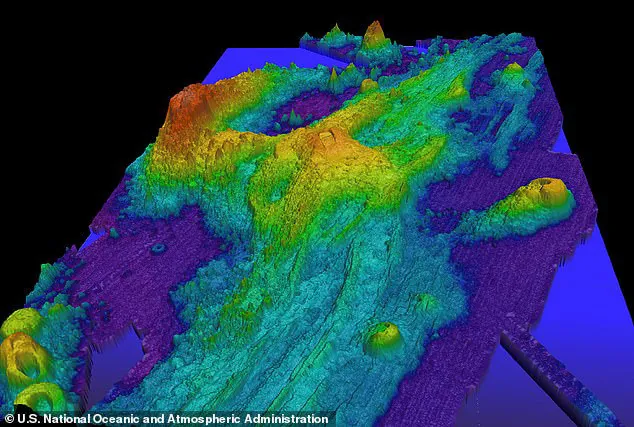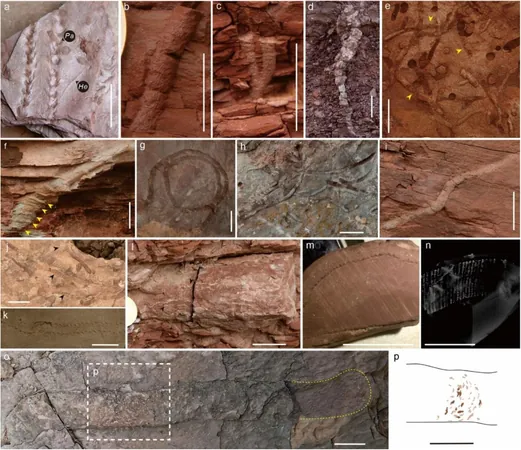
Big Waves Ahead: Underwater Volcano Axial Seamount Poised for Eruption!
2025-01-27
Author: Wei Ling
Get ready for some seismic excitement off the West Coast! Axial Seamount, a colossal underwater volcano almost 300 miles off the Oregon coast, is demonstrating signs that an eruption could be just around the corner.
Towering 3,600 feet and spreading over 1.25 miles, Axial Seamount sits nearly 4,626 feet beneath the surface of the Pacific Ocean. Recent observations show significant swelling and rumblings that have volcanologists on alert for potential magma buildup. Experts predict that we could see an eruption by the end of 2025!
Mike Poland, a scientist with the Yellowstone Volcano Observatory, expressed enthusiasm about Axial's activity, calling it one of the best-monitored submarine volcanoes globally. He reassured the public, stating, "This volcano doesn't really pose a hazard." Unlike more explosive volcanic eruptions, Axial's eruptions are expected to resemble those of Hawaiian lava flows, characterized by gentle lava effusions rather than violent explosions.
Straddling the Juan de Fuca Ridge, which stretches from Oregon to Alaska, Axial Seamount is a relatively young shield volcano. Its shape and behavior significantly reduce the risk associated with an upcoming eruption. Recent eruptions from this volcano occurred in 1998, 2011, and 2015, marking it as the most active volcano in the Pacific Northwest, according to Oregon State University Research Associate Bill Chadwick.
Chadwick explains that Axial Seamount's activity has increased, prompting closer monitoring. "While it's usually inflating, it has recently shown a more rapid seafloor rise, hitting about 25 centimeters per year as of 2024," he noted. Much like a balloon being inflated, this underwater volcano's summit gradually rises until pressure causes magma to burst forth, leaving behind a cooled surface as the seafloor subsides.
Incredibly, on the day of its last eruption in 2015, Axial experienced around 9,000 earthquakes, a clear sign that something was brewing below. Recently, there has been a notable uptick in seismic activity, which Chadwick attributes to the volcano reaching the final stages of preparation for its next eruption.
The underwater environment mitigates the potential for widespread destruction. The immense pressure from the ocean inhibits explosive eruptions, with rapid cooling occurring due to contact with freezing ocean water. Poland noted that even explosive eruptions struggle against this pressure, allowing only controlled lava flows to erupt.
Equipped with advanced monitoring tools, including remotely operated vehicles (ROVs) and cutting-edge fiber-optic cable systems, the OSU team can observe real-time data coming from the seafloor. "In just ten minutes, I can access data collected at Axial," Chadwick remarked, underscoring the comprehensive monitoring process at work.
Importantly, these underwater eruptions pose no threat to coastal communities. "You wouldn't even know anything was happening unless you were specifically monitoring it," Chadwick stated. This means that while researchers study promising every scientific lead without causing public alarm, the aim is to enhance global understanding of volcanic behavior overall.
By refining eruption forecasts from Axial, scientists hope to apply newfound knowledge to other volcanoes worldwide. With many volcanoes lacking real-time monitoring, Axial Seamount's three decades of data provide an invaluable resource for future studies.
As Poland emphasizes, "Being able to forecast eruptions from a submerged volcano shows how far scientific capability has come. Such forecasting could be a game-changer for predicting volcanic events elsewhere."
Stay tuned, because as these fiery giants of the deep prepare to rumble, we will be watching closely—and learning more about our dynamic planet!




 Brasil (PT)
Brasil (PT)
 Canada (EN)
Canada (EN)
 Chile (ES)
Chile (ES)
 Česko (CS)
Česko (CS)
 대한민국 (KO)
대한민국 (KO)
 España (ES)
España (ES)
 France (FR)
France (FR)
 Hong Kong (EN)
Hong Kong (EN)
 Italia (IT)
Italia (IT)
 日本 (JA)
日本 (JA)
 Magyarország (HU)
Magyarország (HU)
 Norge (NO)
Norge (NO)
 Polska (PL)
Polska (PL)
 Schweiz (DE)
Schweiz (DE)
 Singapore (EN)
Singapore (EN)
 Sverige (SV)
Sverige (SV)
 Suomi (FI)
Suomi (FI)
 Türkiye (TR)
Türkiye (TR)